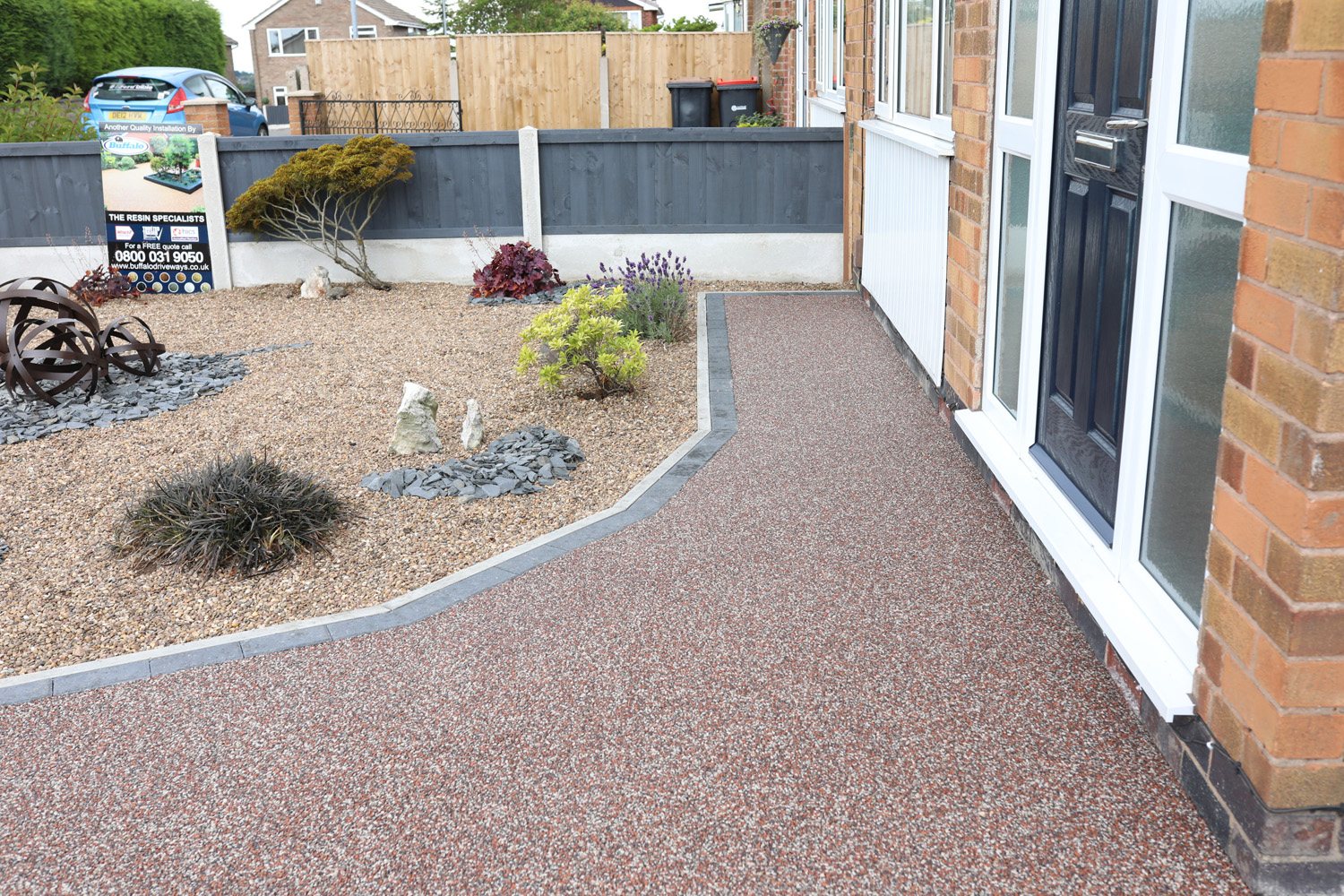When it comes to designing and maintaining outdoor spaces, pathways play a crucial role in enhancing functionality and aesthetics. Among various options available, resin pathways have emerged as a popular choice for homeowners and landscapers alike. Known for their durability, versatility, and visual appeal, resin pathways offer a long-lasting solution for outdoor areas. This article explores the benefits of resin pathways, the installation process, and maintenance tips to ensure they remain in excellent condition.
1. What Are Resin Pathways?
Resin pathways are created by combining resin with aggregate materials, such as stones, gravel, or recycled materials. The resin acts as a binding agent, holding the aggregates together to create a solid and durable surface. These pathways can be customized in terms of color, texture, and design, making them suitable for various outdoor settings, from gardens to driveways.
2. Benefits of Resin Pathways
Resin pathways offer numerous advantages over traditional paving materials, making them a preferred choice for outdoor spaces:
- Durability: One of the most significant benefits of resin pathways is their durability. Resin-bound surfaces can withstand heavy foot traffic, harsh weather conditions, and UV exposure without cracking or fading. This makes them ideal for both residential and commercial applications.
- Low Maintenance: Resin pathways require minimal maintenance compared to other materials. Regular cleaning with water and mild detergent is usually sufficient to keep them looking their best. Additionally, the smooth surface prevents weed growth, reducing the need for herbicides.
- Aesthetic Appeal: Resin pathways can be customized to match the style of your home and landscape. With a wide range of colors and textures available, you can create a unique look that enhances the overall appearance of your outdoor space.
- Safety: Resin pathways are designed with safety in mind. The porous surface allows for effective drainage, reducing the risk of puddles and slip hazards. Additionally, textured finishes can provide extra grip, making them suitable for high-traffic areas.
- Eco-Friendly Options: Many resin pathways can be made using recycled materials, making them an environmentally friendly choice. Their permeability also allows rainwater to drain through, reducing surface runoff and promoting groundwater recharge.
3. The Installation Process
Installing a resin pathway involves several key steps to ensure a durable and visually appealing result:
- Site Preparation: The first step is to prepare the area where the pathway will be installed. This involves clearing any existing vegetation, debris, and soil to create a level base.
- Base Layer Installation: A base layer of crushed stone or gravel is typically laid to provide stability and support for the resin. This layer should be compacted and leveled to create a solid foundation.
- Mixing the Resin: The resin is mixed with the chosen aggregate material according to the manufacturer’s instructions. It’s crucial to achieve the right consistency for optimal performance.
- Laying the Pathway: Once mixed, the resin and aggregate mixture is poured onto the prepared base layer. The mixture is spread evenly using trowels to achieve the desired thickness and finish.
- Finishing Touches: After the pathway is laid, it needs time to cure and set. This can take anywhere from a few hours to several days, depending on weather conditions and the specific resin used.
4. Maintenance Tips for Resin Pathways
To ensure your resin pathway remains in excellent condition for years to come, consider the following maintenance tips:
- Regular Cleaning: Periodically clean your pathway using a hose, broom, or pressure washer to remove dirt, leaves, and debris. This will help maintain its appearance and prevent staining.
- Address Stains Promptly: If you notice any stains, treat them as soon as possible. For oil or grease stains, use a suitable cleaner and scrub gently to avoid damaging the resin surface.
- Inspect for Damage: Regularly check for any signs of wear, such as cracks or surface erosion. Addressing minor issues promptly can prevent further damage and extend the lifespan of your pathway.
- Reapply Sealant: Depending on the type of resin used, you may need to reapply a protective sealant every few years to maintain its appearance and durability. Consult with your installer or manufacturer for specific recommendations.
5. Conclusion
Resin pathways offer a durable, low-maintenance solution for enhancing outdoor spaces. With their aesthetic appeal, safety features, and customizable options, they can transform any garden, yard, or commercial area into a functional and attractive environment. By understanding the installation process and committing to regular maintenance, you can ensure that your resin pathway remains a beautiful feature of your landscape for years to come.
